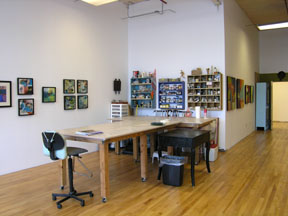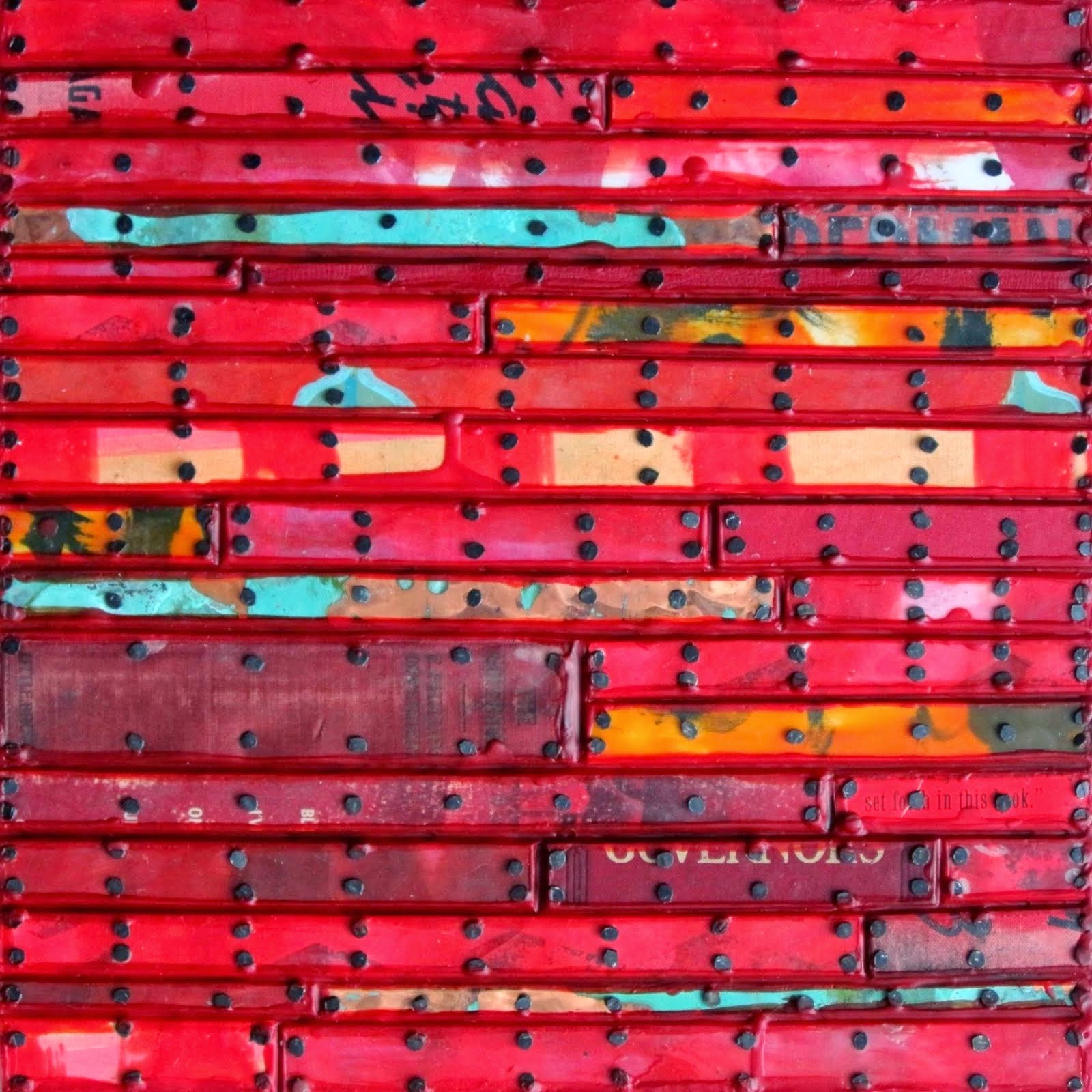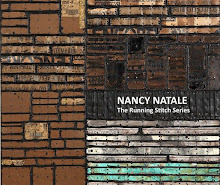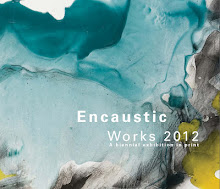I would like to share what I learned about the life and work of Mark Rothko from reading Mark Rothko: A Biography by James E. B. Breslin, published in 1993 by the University of Chicago Press. Breslin (no relation to Jimmy Breslin) was an English professor and authority on modern American poetry. An unplanned visit to a Rothko retrospective at the Guggenheim in 1979 inspired Breslin to begin writing his definitive biography of Rothko some seven years later. Not only was Breslin motivated by his love of Rothko's mature paintings, but he also identified with Rothko's reinvention of his life and work in his late 40s since Breslin was undergoing some of the same life changes himself. Rothko's paintings, Breslin said, "create an empathetic space in which to confront emptiness and loss; they create environments for mourning." (from Breslin's obituary)
Breslin spent more than seven years researching and writing Rothko's bio, and it was critically aclaimed, termed by Hilton Kramer, NY Times art critic, "the best life of an American painter that has yet been written." Sadly, Breslin died of a heart attack at age 60 while writing a biography of John Coltrane. He had immersed himself in the 1950s jazz scene and even learned to play the sax in search of his subject. The world is poorer for his loss.
What is so surprising to me about this book is that it seems to be written from an artist's perspective, even though Breslin had no formal training in art or art history. Initially he learned about painting from his second wife, Ramsay Bell Breslin, who at the time was painting Abstract Expressionist-influenced work. (She is now an arts writer, poet and biographer herself.) But more about the artist's perspective later after we get the facts, Maam.
Rothko's Early Life
Rothko was born September 26, 1903 in Dvinsk (now Daugavpils), Latvia, at the time under Russian control. There were two considerably older brothers and a sister in his family, which was headed by their father, Jacob Rothkowitz, and mother, Kate. Although Jacob had separated himself from orthodox Judaism because of his Marxist beliefs and the repressive orthodoxy in Dvinsk, he insisted that his youngest son Mark (born Marcus) be educated in a religious school. Bloody pograms against the Jews in 1905 had driven Jacob back toward orthodox Judaism in time to influence the early education of his youngest son. Marcus/Mark received rigorous schooling in Hebrew texts, Talmudic law and orthodox rules, but later made an angry break with Judaism after his father's death.
 Left to right: Rothko's brother Albert, sister Sonia, unnamed cousin, Mark/Marcus, brother Moise. (from National Gallery site)
Left to right: Rothko's brother Albert, sister Sonia, unnamed cousin, Mark/Marcus, brother Moise. (from National Gallery site)Jews in Russia had been consigned by Catherine the Great to live in an area called the Pale of Settlement. They were forbidden from engaging in certain trades, kept in poverty and miserable living conditions, and subject to political and physical persecution. These conditions drove thousands to emigrate; among them were the Rothkowitz family who chose to re-establish themselves in Portland, Oregon, where they had a large extended family.
Jacob, unable to make a successful living as a pharmacist, left Russia in 1910. Two years later, his two older sons emigrated, and in 1913, Kate, Sonia and Mark/Marcus joined the rest of the family. About six months after the 10-year-old Rothko with his mother and sister arrived in Portland, Jacob Rothkowitz died suddenly, leaving the family dependent on other relatives for their support.
Influences on Rothko: ostracization of the Jews in Russia, early immersion in Jewish school, shame and embarrassment on arriving in America because of his clothing and inability to speak English, separation from and then early death of his father.
Rothko in America
Rothko quickly learned English and did well in school, although his foreign origin, Jewishness and poverty set him apart and excluded him from membership in certain high school clubs. He played mandolin and piano by ear and loved music, debating, poetry and dramatic arts. He liked to draw but had no formal training in art and no inclination toward becoming an artist.
In 1921 he enrolled at Yale, having been awarded a scholarship along with two Jewish friends from Portland. At Yale, they suffered from overt and institutionalized anti-Semitism, classism and Nativism. Even worse, at the end of their first semester, their tuition scholarships were converted into loans, forcing them to find menial jobs on campus. Rothko became disillusioned with education at Yale, let his grades slip and dropped out of college in 1923.
Rothko had entered Yale with vague ideas of becoming an engineer or lawyer, but moved to New York after leaving Yale to study art at the Art Students League. He claimed that he had visited a friend who was painting from a nude model and decided that "this was the life for me." He studied briefly at the New School of Design with Ashile Gorky and at the Art Students League with Max Weber. His work at the time was of "domestic and urban scenes in a thickly impastoed, murky expressionist style" as influenced by Weber.

Edith and early life in the arts
In the summer of 1932, Rothko was camping with a friend at Lake George when he met a young woman nine years his junior from Brooklyn, named Edith Sachar. Rothko's mandolin playing attracted her, and that fall they were married. They lived in a two-room basement apartment that had once been a dog kennel, but there Rothko painted and smoked while Edith began sculpting in clay. They bought a piano and Rothko played for hours and hours - especially Mozart. They struggled financially and Rothko found work teaching art to children at the Brooklyn Jewish Center. Edith eventually started a jewelry business that became successful.
During this time Rothko became friends with Milton Avery, who was 18 years older than him, and a successful painter. According to Breslin, "Avery represented psychological calm, domestic stability, a life devoted to the poetry and light of pure art." Breslin also believed that Rothko's mature work owed a lot to Avery's influence in their "simplified, buoyant forms, their expressive use of color, their thinned paints and even their quiet..."

Milton Avery: Rothko with a pipe, 1936 (National Gallery of Art, Ailsa Mellon Bruce Fund, 1974.123.1)
Rothko participated in his first group show in 1928 and his first solo show in New York in 1933 at the Contemporary Arts Gallery, where he showed 15 oils, 4 watercolors and 6 black tempera on paper. Throughout the '30s Rothko struggled with his expressionist subjects - portraits, landscapes, exteriors, interiors. During this period, Rothko painted a self portrait that Breslin refers to again and again in reference to Rothko's sense of himself.

Mark Rothko, Self-Portrait,1936, Collection of Christopher Rothko
"...his Self-Portrait fabricates a theatrical self, the only means by which the self-conscious Rothko could express real feeling. Just as the right side of his suit jacket is pulled too far across his chest and the left side pulled too far back, Rothko's mythic disguise both covers and exposes his private self - a tension between the desire to be seen and the desire to remain hidden that will become central to his art....
"Rothko forcefully asserts himself, but he also shields his apparently damaged right hand with his left, conceals himself behind his Sunday clothing and mythic identify, and withdraws behind his dark glasses, keeping himself shadowed, enigmatic, and private, as if to protect himself from the very kind of invasive looking that produced his paintings. Angry, he remains silent and held in. Hurt, he withdraws. Or so it seems, until we realize that behind his blue glasses we can make out two small flat black discs, Rothko's eyes, gloomy, haunted, and impenetrable, but looking out..." (page 109)








No comments:
Post a Comment